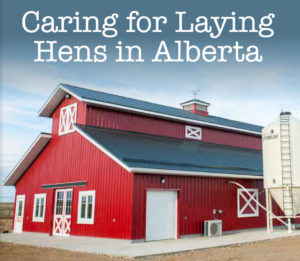Hen Housing

Egg laying hens are housed a variety of ways in Canada. Every housing system is designed to provide a clean environment, fresh food and water, and protection from predators. Additionally, every indoor housing system offers consistent temperature, humidity, lighting and air quality. Egg farmers are continuously seeking to improve the care and well-being of their hens.
Each hen housing system has its own unique set of benefits and challenges. Regardless of the housing system utilized, it is ultimately the farmer’s experience and expertise that enables the associated benefits to be realized and the challenges to be overcome. The farmer, not the housing system, is responsible for achieving Canada’s world-class standards for animal care, food quality and safety.
Hen Housing Policy
EFA’s Board of Directors adopted a provincial hen housing policy in 2013, which stated that “no new conventional or enrichable cage systems will be allowed to be installed in Alberta after December 31, 2014.” Alberta egg farmers supported the policy and embraced the shift to alternative hen housing systems, which includes enriched, free-run and free-range.
Between January 2014 and December 2018, 20% of laying hens in Alberta transitioned out of conventional housing. At the end of 2018, 32% of provincial egg production were from laying hens housed in alternative systems. That number has since risen to 52% of Alberta egg barns as of December 2021. At the end of 2023, 63% of egg barns have transitioned to alternative housing systems.
The 2017 Code of Practice established a timeline for the Canadian egg industry’s full transition away from conventional housing:
- January 1, 2020 – all white hens must be provided a minimum of 67 in2 & all brown hens must be provided a minimum of 75 in2
- July 1, 2031 – all birds must be provided a minimum of 90 in2
- July 1, 2036 – all hens must be housed in an alternative housing system that supports natural nesting, perching and foraging behaviors
Hen Housing Specifications
EFA hen housing specifications provide Alberta egg farmers with a plan and timeline to help older layer barns transition to meet the requirements of the updated national Animal Care Program, which is based on the 2017 Code of Practice. The policy includes details about cage measurements and hen housing density, and enrichments that are included in alternative housing systems to allow birds to express more natural behaviors, such as nesting, perching, foraging and dust-bathing.
